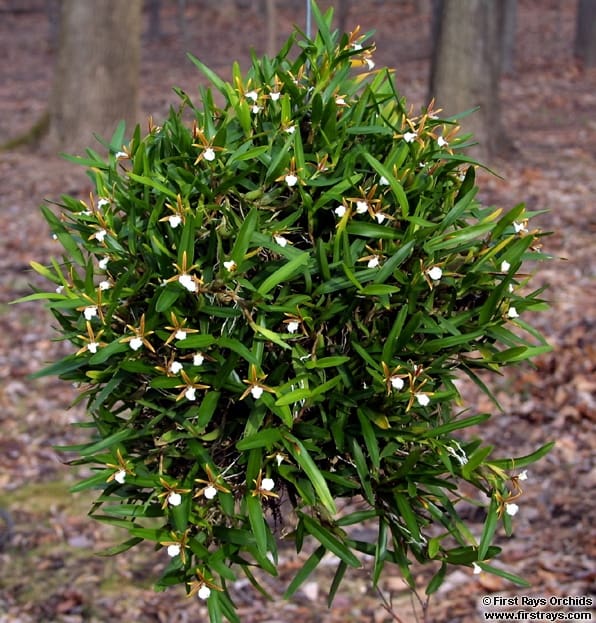
We’ve all heard recommendations to “let orchids dry out between waterings” or “keep evenly moist”, and the like, plus questions about “how often do I need to water?” or “how long can orchids go without watering?”. Personally, I think we need a different mindset about our watering strategy. If we want our plants to grow and bloom as well as they possibly can, we should ask ourselves “how should I be watering my orchids?”. Science and nature give us the clues.
Orchids have evolved various strategies to capture, store and conserve water – for example, velamen on roots to act like a sponge, pseudobulbs on cattleyas and thick, fleshy leaves on phalaenopsis to hold water, plus thick, waxy cuticle layers on the leaves to prevent its loss. But we need to look at the physiological functioning of plants to understand it better.
Very simply, plants grow through photosynthesis, by capturing carbon and producing fuel, then transforming nutrients and fuel into tissues. The chemical reaction for photosynthesis is simple:
6CO2 + 6H2O + energy = C6H1206 + 6O2
Carbon dioxide + water + energy (photons) = glucose + oxygen
Water, as you can see, is a major raw material in that reaction, so it makes sense that having readily-available water is a key to growth. In fact, if you do some mass balances with the other reactions that occur, in order for a plant to gain one pound in overall mass, it must process about 200 pounds of water! It turns out that a plant uses moisture at the root system as a “control factor”, as well.
When there is plenty of water available, hormones generated by the roots travel upwards in the plant, providing a “signal” to the leaf stomata to open. By doing so, carbon dioxide can enter the leaves – providing the other critical raw material for photosynthesis – and oxygen is released. (Coincidentally, those are some of the same hormones we “boost” by applying growth stimulants like Kelpak.)
So we can see that making sure our plants have plenty of water is a key to growth, both as a raw material and as a “well being” trigger. It also gives us a clue as to why a plant that is watered frequently or kept evenly moist will do better than one allowed to see dry spells, but it doesn’t mean we can simple “pour it on” and be done. No – we also must recognize that orchid roots need plenty of air circulation, so we must choose our potting medium so that the water that is inherently trapped between particles does not suffocate the roots.
So the question “How should I water my plants” involves potting, as well. Once that is optimized for your growing conditions, the answer becomes “heavily and often” and your plants will do great!